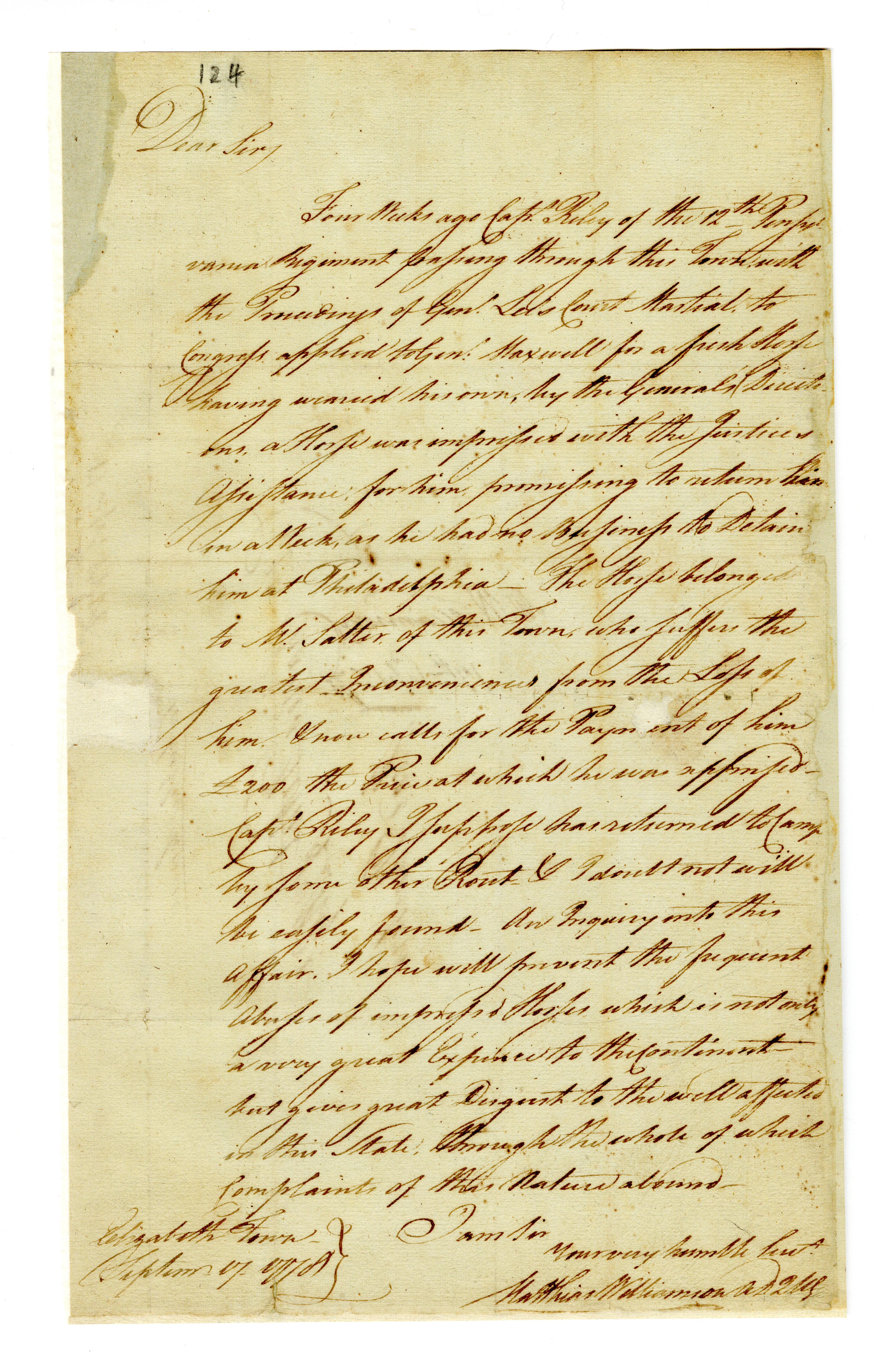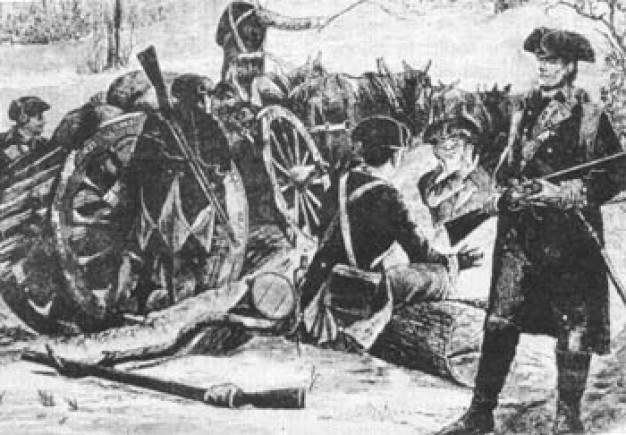Revolutionary PHL: Human Struggles of the Continental Supply
“Officers of artificers beg dismission from the service, producing certificates to show that their families are starving for bread, - no wonder! with wheat at $25 per bushel!” - Letter from Udny Hay to Nathanael Greene.
The APS is home to the Nathanael Greene Papers, which document the experiences of those who helped supply the American forces throughout the Revolutionary War. Now, all of these papers are available digitally as part of The Revolutionary City: A Portal to the Nation’s Founding!
As Quartermaster General, Nathanael Greene struggled with, but ultimately improved, the transportation of troops and supplies that the Continental Army depended upon. The need for supplies fluctuated throughout the war, but their successful transportation remained essential to the American cause. At the war’s onset, British naval power along the Atlantic Coast forced the Continental Army into a line of central positions from which Washington could move to repel British landings. His “line of communications” stretched from the Hudson River to the Head of Elk on the Chesapeake.
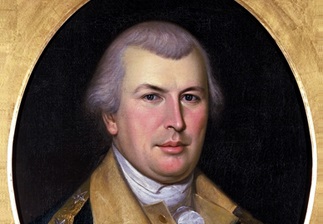
To support the Continental Army, the Quartermaster's department coordinated efforts between many groups to supply the main army via wagon-trains along Washington’s Line. This effort was not easy. It required wagons, livestock, forage, and of course human teams to facilitate the transportation, all of which were in constant short supply during Greene’s time as Quartermaster General. Likewise, wagon-trains were hampered by poor weather conditions, and often encountered roads and bridges in disrepair. As such, the Quartermaster’s department frequently struggled to maintain enough resources to effectively feed, clothe, and arm the Continental Army—struggles are all reflected in this collection.
Bad practices of those working as wagon-teams also greatly hindered the effectiveness of army wagon-trains. In 1779, George Washington wrote to Greene asking that he prevent women and lazy soldiers from riding in wagons. Complaints of this sort were common. A year later Henry Young wrote to Greene describing the “carelessness and villainy” of wagon teams. Washington and Greene worked together to curb these behaviors and create a more robust transportation system.
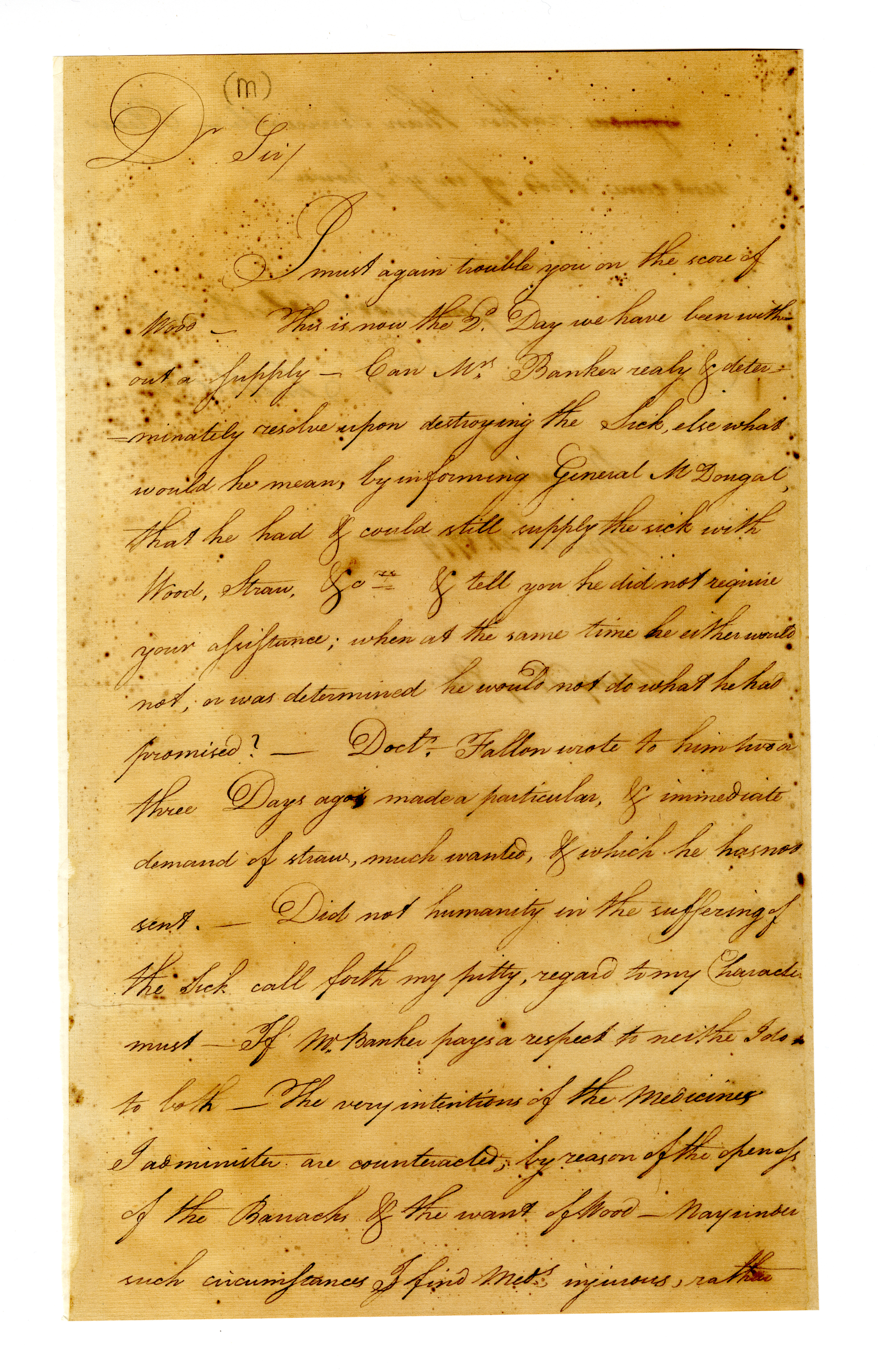
Working as part of a wagon-team, often referred to as a wagoner, was thought to be laborious and disagreeable. Wage caps for wagoners made it even harder to attract workers, as skilled craftsmen such as artificers and carpenters could often find better pay working outside of the army. Struggles to manage personnel were a frequent topic of discussion between Greene, his subordinates, and the many Continental officers including George Washington. In 1779, for example, Nathanael Greene wrote to John Cox stating that “the business of enlisting wagoners must be pursued with more vigor”, even at the expense of raising the wage cap. Quartermasters and wagonmasters continued to make a persistent effort to enlist workers, but struggled for something to offer the potential wagoners. In 1780, Wagonmaster-general James Thompson wrote to Greene informing him of an opportunity to employ wagoners for an entire year if he can assure them a certain amount of clothing in addition to their normal wages. These propositions were usually too expensive. The Continental Army became desperate as soldiers starved on campaigns and in winter quarters.
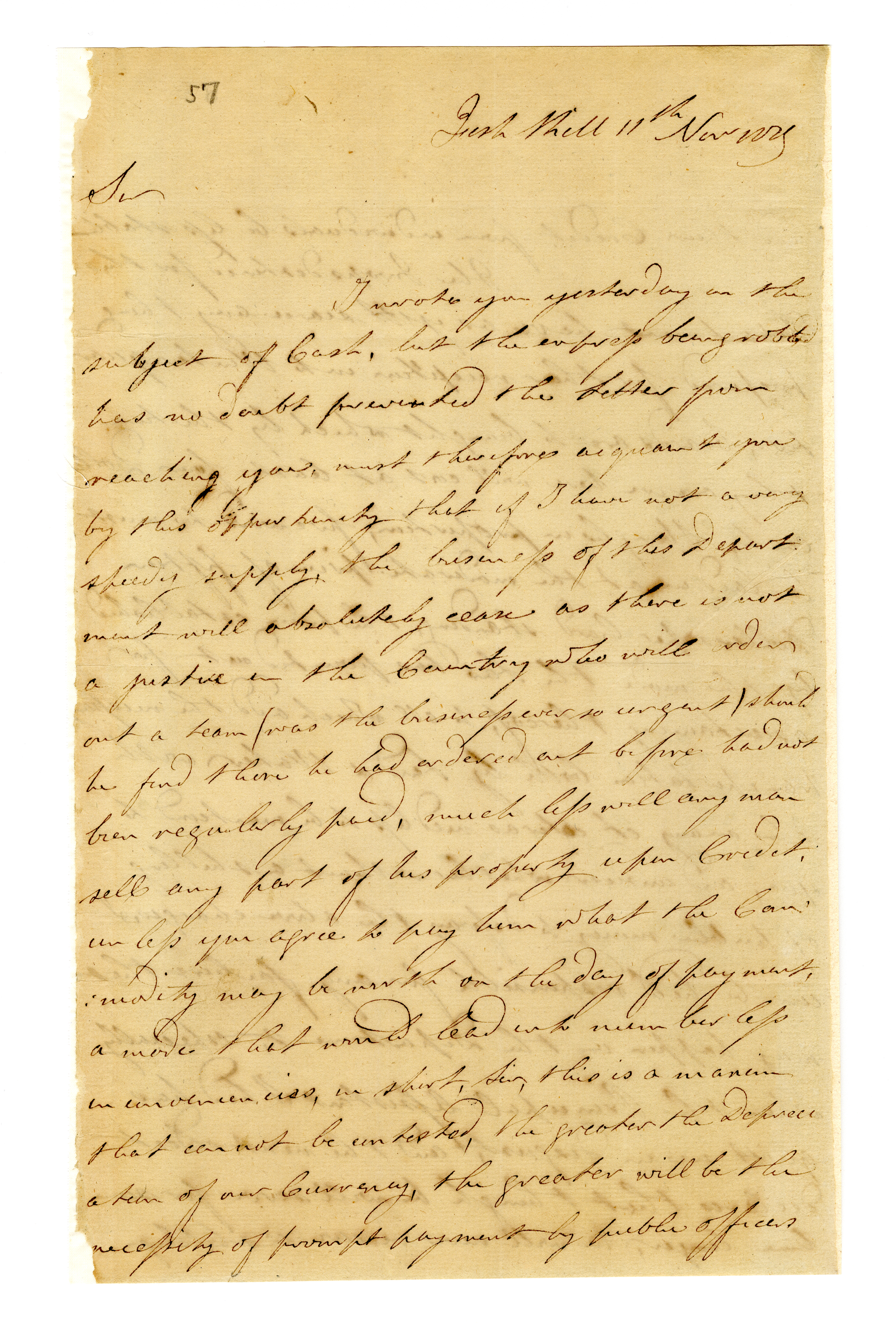
At times, when these obstacles strained resources to their limit, impressment became necessary. The seizure of materials, livestock and manpower by the British and Continental armies during the Revolutionary war was not uncommon. During Washington’s retreat through New York City, a hasty departure from Long Island forced Quartermasters to impress horses and wagons in the city and neighboring areas. Here, impressment saved Continental army supply stores from falling into British hands.
The correspondence within this collection illustrates the effects this and other instances of military seizures had on Americans. During the Philadelphia Campaign, fear of impressment caused many Pennsylvanians to conceal their wagons, horses, oxen, etc. When property was taken, those affected sought to have their damages repaid. Attempts at this, both formal and informal, are documented in the collection. Further, this collection mentions legislation from the General Assemblies of Rhode Island and New York that limited the impressment of articles and wagon-teams by the Continental Army. The newly formed United States would continue to grapple with issues of impressment, primarily in the form of British press-gangs, for several decades.
